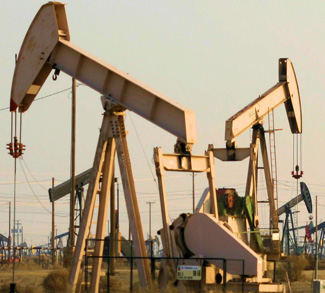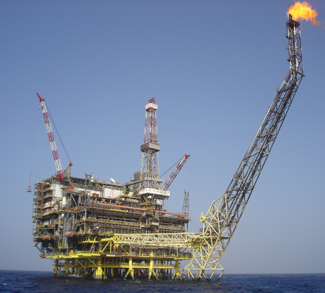Supply-side downward price pressure has been the story of global energy prices over the past year: newfound supply from the Shale Revolution, OPEC’s gambit of market-share grabbing inundation, and new supply coming online from Iraq and soon Iran. The result was a plunge in oil prices from $115 in mid-June 2014 to below $70 by mid-December, and then to the low $40s as of last week.
Now we are seeing signs of a new economic crisis, one that began in Asia and spread to Europe and North America. China’s stock market meltdown has gathered pace and the recent yuan devaluation stands as a grim omen of not only tepid Chinese growth, but a lack of currency stability in the region should the crisis deepen. The 8% drop in Chinese exports in July is leading to a few uncomfortable questions of oversupply and a lack of global demand – systemic issues that transcend the sphere of domestic economic policy in China – and a looming currency war will only serve to make things worse.
The precise bottom of this newest sell-off in global equity markets is open to speculation, but in terms of oil prices it represents demand-side downward pressure and, depending on how things pan out, the potential for a whole lot more of it. WTI crude was down over 3% in pre-market trading to flirt with the sub-$39 range.
This is a scenario that is various degrees of terrifying for oil-producing economies, many of which have weathered the past eight months with a combination of fiscal austerity, asset sales, debt issuance, and burning through foreign reserves – basically holding on for dear life and hoping for a price rebound which now looks to have been pushed further into the future.
Many governments were caught off guard by the drop in oil prices back in 2014, and after ten months of struggling they are now left with a reduced toolbox with which to insulate their economies. Others have been brought to the edge of the abyss over thus period, and another round of price drops threatens to push them in.
Here are a few oil producers that stand to lose big from a further dip in global oil prices:
Venezuela
Oil accounts for over 95% of Venezuela’s exports and 25% of its gross domestic product. Without oil sales to generate foreign currency to pay for other key imports, supermarket shelves are increasingly barren and industry is grinding to a halt up and down the country. The Maduro government has been borrowing from anyone willing to lend (a rapidly shrinking pool) and printing mountains of money to pay its bills. The predictable result has been inflation spikes of an indeterminate degree because the government stopped posting official statistics last December. Outside estimates have put Venezuela’s inflation rate at anywhere from 200-780%, well within the range of the dreaded ‘hyperinflation’ branding.
Government and state-owned corporate debt has now grown to $130 billion, $6 billion of which is due this year, leading to fears of a looming default.
Venezuela can be considered an extreme case and a deserving member of the RBC’s ‘Fragile Five’ club of economically unstable oil producers (the others are Libya, Iraq, Algeria, and Nigeria). Its economic reckoning is a matter of ‘when,’ not ‘if,’ and a prolonged dip into the $30 range could bring about a messy default in a matter of months.
According to Deutsche Bank, the Russian government needs an oil price of $89 per barrel to balance its budget.
Russia
Russia is suffering from a prolonged recession where all attempts at diversification away from energy reliance, such as a weak ruble-fueled manufacturing renaissance, have failed. At this point an oil price recovery is the only thing that can rescue the squeezed Russian middle class. The Russian economy has already contracted over 4.6% in the second quarter (it shrunk 2.2% 1Q 2015), the ruble has lost 40% of its value over the past year, and inflation is hovering at around 15%. Though not nearly as dire as Venezuela’s outlook, the Russian economy has been feeling the pinch from oil prices for a long time now. It is estimated that the Central Bank of Russia has used $140 billion of its foreign reserves to prop up the rouble since January 2014, leaving it with around $360 billion to work with should another crisis be waiting around the corner. Moscow has also had to grapple with international fallout and Western sanctions following its occupation and annexation of Ukraine’s Crimean Peninsula in early 2014.
This parade of bad economic news occurred against the backdrop of a modest price recovery into the $50s-$60s over the first half of 2015. The pain can be expected to be considerably worse should demand-side factors combine with a supply glut to produce a prolonged period of $30-range oil prices.
One positive factor for Russia is its low levels of debt vis-à-vis many developed economies that binge borrowed in the wake of the 2008 financial crisis.
According to Deutsche Bank, the Russian government needs an oil price of $78 per barrel to balance its budget.
Nigeria
Nigeria’s newly elected President Muhammadu Buhari inherited a tenuous economic situation from his predecessor: government revenue flows squeezed by low oil prices, rife fuel shortages due to a lack of domestic refineries, inflation rates hovering around 9%, low foreign reserves, flagging foreign direct investment, and a currency that has lost around 8% against the dollar this year. And as of yet, President Buhari hasn’t even completed the first requisite step for rectifying the situation by forming a cabinet.
The Nigerian government must diversify away from the energy sector and increase revenues, a difficult challenge given the fact that oil accounts for around 70% of government revenue and 95% of Nigeria’s exports. The elephant in the room will be the highly contentious fuel subsidies that continue to eat away at the government’s fiscal wiggle room (some estimates put the subsidy at costing 20% of the government’s budget). Though these subsidies may seem a natural target for cutting, Buhari campaigned on a strong message of keeping them in place. However, a further plunge in oil prices would create a sense of crisis that might help him backpedal on the promise.
A sign of just how serious the revenue problem is: federal and state governments are increasingly finding themselves in arrears over unpaid pensions, salaries, import fees, and fuel subsidies. Fundamentals of the wider economy are also being affected. The National Bureau of Statistics recently announced that job creation was down 70% in second quarter 2015.
Nigeria’s foreign reserves fell from $34.24 billion in December 2014 to $29.36 billion in March 2015, mostly on government interventions to protect the naira. They have since recovered to $31.5 billion following the imposition of capital controls.
The final part of the list can be found here (subscribers only)




